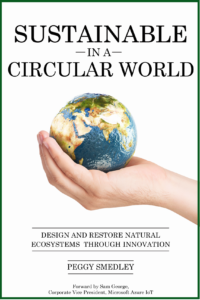-
Today’s Auto Insurance Trends
 Peggy talks about what the insurance companies and other organizations have to say about the impact of distracted driving on auto insurance. She says it is not very consistent across the board, with different states taking different actions and different insurance companies having different tools and resources available. She also discusses: The total estimated cost…
Peggy talks about what the insurance companies and other organizations have to say about the impact of distracted driving on auto insurance. She says it is not very consistent across the board, with different states taking different actions and different insurance companies having different tools and resources available. She also discusses: The total estimated cost… -
Latest Traffic Trends
 Peggy Smedley and Paul Atchley, professor, Dept. of Psychology, University of South Florida, talk about some of the latest news on traffic statistics and the role distracted driving is playing in these numbers. He says the statistics change year over year, but the trends have not been positive. They also discuss: Why people continue to…
Peggy Smedley and Paul Atchley, professor, Dept. of Psychology, University of South Florida, talk about some of the latest news on traffic statistics and the role distracted driving is playing in these numbers. He says the statistics change year over year, but the trends have not been positive. They also discuss: Why people continue to… -
Safety behind the Wheel
 Peggy Smedley and Dan McGehee, professor of engineering, medicine, public health and director of the Driving Safety Research Institute, University of Iowa, talk about distracted driving research. He says it is an important thing more than ever. They also discuss: The history of distracted driving in vehicles. The physiological changes that happen with smartphones. The…
Peggy Smedley and Dan McGehee, professor of engineering, medicine, public health and director of the Driving Safety Research Institute, University of Iowa, talk about distracted driving research. He says it is an important thing more than ever. They also discuss: The history of distracted driving in vehicles. The physiological changes that happen with smartphones. The…
What's Trending
New university research is set to completely transform deep brain stimulation, enabling doctors to move away from manual adjustments and to automatic adjustments based on the patient’s symptoms using new technologies. First approved in 1998, deep brain stimulation is the placement of electrodes in the brain connected to a battery-operated generator in the chest. A small impulse of electricity moves from the generator to the electrodes to stimulate a specific area of the brain, relieving some symptoms and side effects for those with Parkinson’s disease, dystonia, epilepsy, and tremors. It is similar to a cardiac pacemaker. The challenge is in the past those electrical impulses needed to be manually done during doctor’s visits. But now, The University of Texas Health Science Center in San Antonio is using new technology that could completely transform everything. A software update can set the generator battery to continually adjust stimulation based on the patient’s symptoms using a tablet like an iPad that connects through Bluetooth. Here is how this can help: Adjust stimulation based on patient’s symptoms, creating individualized treatment. Improve patient quality of life through symptom optimization. Reduces the number of visits required. The technology manufacturer is launching the product for patient care in 24 locations and the product received federal Food and Drug Admin., approval on February 24. We can expect healthcare technology to become more automatic in the days…
Carnegie Mellon University—also known as CMU—has brought AI (artificial intelligence) to the forefront in many arenas. Now we see the university is partnering with Google Public Sector for large-scale computing, acquiring a large cloud-based GPU cluster. Google Public Sector is providing support for onboarding workloads and optimizing resources, ensuring CMU researchers can leverage its advanced GPU infrastructure. This partnership also brings Google’s presence in Pittsburgh and establishes the city as a growing tech hub in the East, all while bringing an important focus for the nation’s future talent pipeline. Here is how this can help: Expand high-performance computing capacity. Tackle complex challenges in AI. Advance scientific discovery and innovation for real-world impact. Looking to the future, we will continue to see advancements in AI that are closely linked to the availability of computing power. We will ultimately see groundbreaking discoveries that will shape the future of AI and its applications across many…
Social
Constructech Top Products 2025
ASCE Report Card
The opportunities gen AI (artificial intelligence) brings to most industries are significant—dare we say remarkable? But let’s be clear, there are still some challenges. For example, most LLMs (large language models) are trained on publicly available data and the vast majority of enterprise data remains untapped, and much work needs to be done to address this. And again, dare we say address this sooner, rather than later? Enter Granite 3.0, IBM’s third-generation Granite flagship language models, which was announced earlier this week at IBM’s second annual TechXchange event. By combining a small Granite model with enterprise data, especially using the…
We have come a long way with safety. If you journey back to the year 1960 and walked a construction jobsite, you would see very different work conditions than you see today. Hard hats were not mandatory yet and PPE (personal protective equipment) wasn’t the common three-letter jobsite acronym that it is today. Workers would be hanging from the top of buildings, with little gear to protect them. We have certainly come a long way, right? Yes and no. The reality is every year, one in 100 construction workers still get hurt bad enough to need time off work. We…
What You Missed
#Factoftheweek 3,308 lives killed in 2022. That is how many people were killed by distracted driving…
Both FedRAMP (Federal Risk and Authorization Management Program) and CMMC (Cybersecurity Maturity Model Certification) will be…
Today, the ASCE (American Society of Civil Engineers) announced the launch of its 2025 Infrastructure Report Card,…







